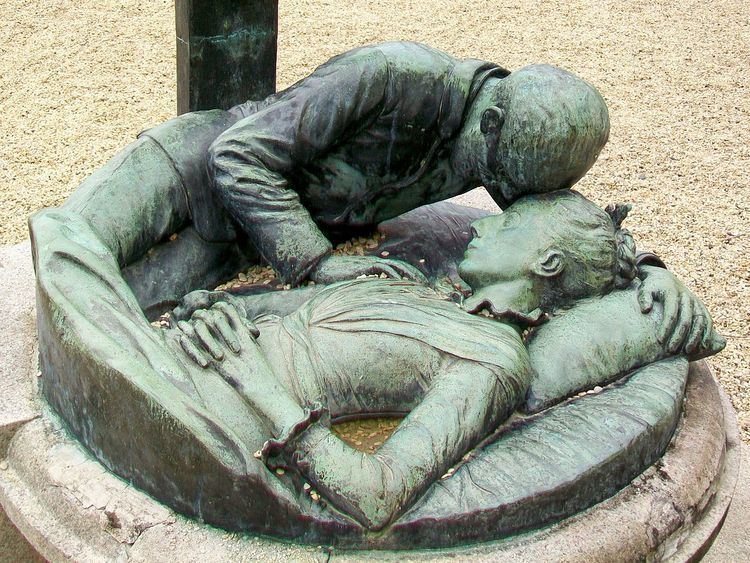Name Albert Bartholome | ||
 | ||
Paul-Albert Bartholome was a French painter and sculptor. He was born in 1848 in Thiverval-Grignon, Yvelines, France, and died in 1928 in Paris.
Contents
Biography
He studied law and fought in the Franco-Prussian war in General Bourbaki's army and became a prisoner in Switzerland. In due course he attended the Ecole des Beaux-Arts in Geneva where he studied painting under Barthelemy Menn. He then set himself up in a studio in Paris and became a close friend of Edgar Degas. He married the daughter of a marquis, Prosperie de Fleury, but she died at a young age in 1887. Much encouraged by Degas he decided to try his hand at sculpture and executed the moving sculpture which marked his wife's grave in Crepy-en-Valois. See later comment. He now concentrated exclusively on sculpture and from 1891 onwards he exhibited each year at the yearly Salon of the Societe nationale des Beaux-arts. Funerary sculpture was very much in vogue in France at that time and much of Bartholome's is death related and his masterpiece is the monument in Pere-Lachaise dedicated to all the dead. He was to work on this for ten years and the inauguration took place in 1899. The "Monument the Dead" is disturbing and involves twenty one larger than life size figures all showing different emotions and reactions to death. There is little sentiment in this composition which is uncompromising, secular and human, although there is an inference that a "light" will defeat the darkness, with the inscription
As a painter he was said to be influenced by Jules Bastien-Lepage
Images of the Pere-Lachaise - Monument aux morts
Note
In 1924 Bartholome executed a monument to Victorien Sardou which was erected by a public fountain in the Place de la Madeleine. In bronze the sculpture depicted a seated Sardou and behind him were allegories of comedy and drama. In 1941 the Germans had the monument dismantled so that the bronze could be melted down and reused.
